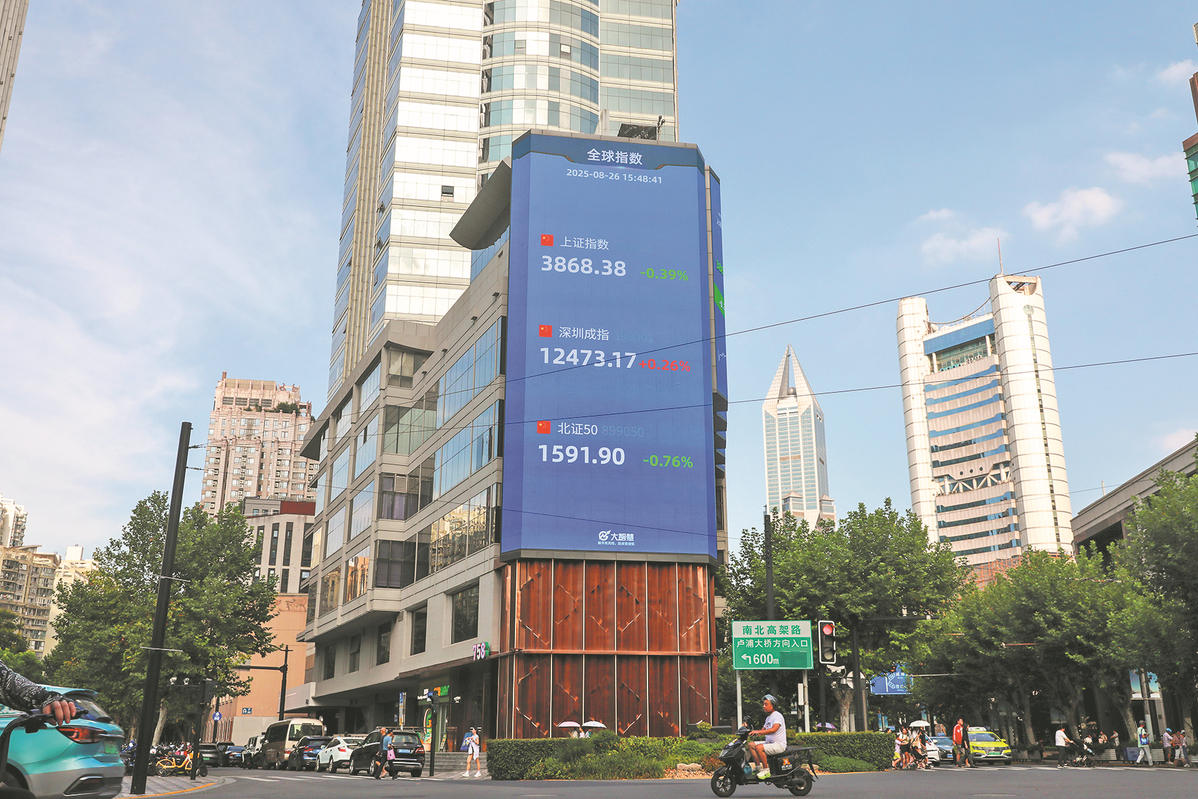Stock surge lifts investors' risk appetite
Depositors moving money out of fixed deposits and into equities, related assets


Confidence in China's A-share market has strengthened, enhancing the capital market's appeal and drawing quicker inflows from wealth management products, insurance funds and other institutional investors.
With bank deposit rates still trending lower — some fixed-term deposits offering barely around 1 percent — the contrast with a rallying stock market has grown sharper. Strong returns on equity-linked wealth management products and mutual funds have fueled the risk appetite of households, prompting many investors to move money out of fixed deposits and into equities and related assets.
"With interest rates trending lower and the economy shifting toward high-quality growth, investors' preference for bond-type assets is expected to weaken, while equities will increasingly become a key direction for household portfolios," said Ming Ming, chief economist at CITIC Securities.
Data from Southern Finance Omnimedia Corp's fintech platform focusing on asset management showed that equity-linked wealth management products delivered strong returns in July, with average annualized yields since the start of this year rising to 9.9 percent, up 7.19 percentage points from June. Banks have since stepped up issuance, with at least 20 new equity-linked products launched since August, according to a Hangzhou-based financial data provider. In late August, CMB Wealth Management and PSBC Wealth Management both highlighted medium-risk hybrid and equity-linked offerings in their marketing campaigns.
A national joint-stock bank wealth manager noted that a correction in China's bond market has eroded returns from fixed-income products, while rebounding equities are drawing more funds into equity-linked vehicles. Allocations vary by risk profile, but equity weightings of 20-40 percent have been most popular among clients.
Insurance funds have also raised their equity exposure. Data from the National Financial Regulatory Administration showed that by the end of the second quarter, the balance of insurance funds invested in stocks was 3.07 trillion yuan ($429.8 billion), up 640.6 billion yuan in the first half and accounting for 8.47 percent of the total — the highest in recent years.
Interim results from A-share listed companies highlight the same trend, with insurance funds boosting their holdings by the end of the second quarter across a range of sectors, including hardware and electrical equipment, software services, pharmaceuticals and biotechnology, as well as banking.
Since the start of this year, bank stocks and other high-dividend sectors have emerged as prime targets for insurance funds. Analysts note that with long-term interest rates falling, dividend strategies offer insurers stable cash flows that help offset shrinking interest income. The long-term value of bank shares also matches the duration of insurers' capital, making them a natural fit for investment strategies and performance benchmarks.
In January, China introduced a plan to channel more medium- and long-term capital into the market, proposing that large State-owned insurers allocate 30 percent of new annual premiums to A shares starting in 2025.
The plan also established multiyear performance evaluations — spanning three years or more — for public offering funds, State-owned insurers, basic pension funds and annuity funds. The aim is to encourage long-term strategies and strengthen institutional participation in equities.
Beyond policy drivers, insurers' growing equity exposure in the first half also reflects business needs. Over the past three years, yields on China's 30-year government bonds have continuously declined, while the preset interest rates of insurers' main products were locked in earlier. This has squeezed the spread between the yields on maturing fixed-income portfolios and liability costs, pushing insurers to restructure their underlying assets and raise long-term expected returns through optimized equity allocation, analysts said.
A survey by the Insurance Asset Management Association of China, covering 86 insurers and 36 insurance asset management companies, found that equities are the most preferred asset class for insurance institutions in the second half of 2025, followed by bonds and mutual funds. Most expect their overall allocations to remain largely unchanged from early this year, though some anticipate modest increases in equity and bond investments.
jiangxueqing@chinadaily.com.cn




































